Welcome to our comprehensive guide on creating a hummingbird oasis! In this article, we explore the intriguing question of whether hummingbirds enjoy bird baths. With 20 expert tips and insights, we delve into all aspects of designing an inviting habitat for these enchanting creatures. Get ready to transform your backyard into a haven that hummingbirds will love to visit!
What is a Hummingbird?
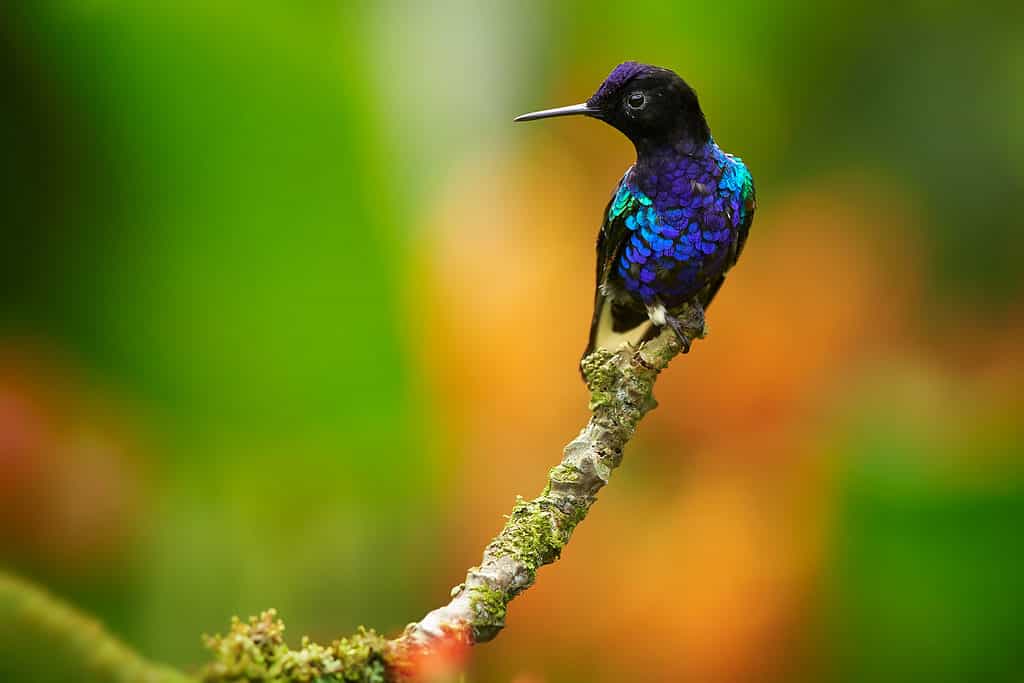
©Martin Mecnarowski/Shutterstock.com
Hummingbirds are small birds that are renowned for their ability to rapidly flutter their wings. They are native to the Americas and have many unique physical characteristics.
Hummingbirds typically grow to between 3 and 5 inches in length and weigh between 2 and 6 grams. They have short, straight bills and long, narrow wings. Their feathers come in a variety of colors, ranging from iridescent greens and blues to browns and black.
Hummingbirds can beat their wings as many as 80 times per second, allowing them to hover in the air or fly backward. Their wings can make a humming sound that gives them their name. They also have the ability to fly at speeds up to 34 miles per hour.
Hummingbirds have long, thin legs and feet that are ideal for perching. They have long, forked tongues that enable them to feed on nectar from flowers. They also have powerful eyesight that helps them find food and avoid predators.
Hummingbirds are known for their bright colors and energetic flight patterns. They are the smallest of all bird species, and they have a variety of unique physical features that help them survive in their environment.
Do Hummingbirds Enjoy Bird Baths?
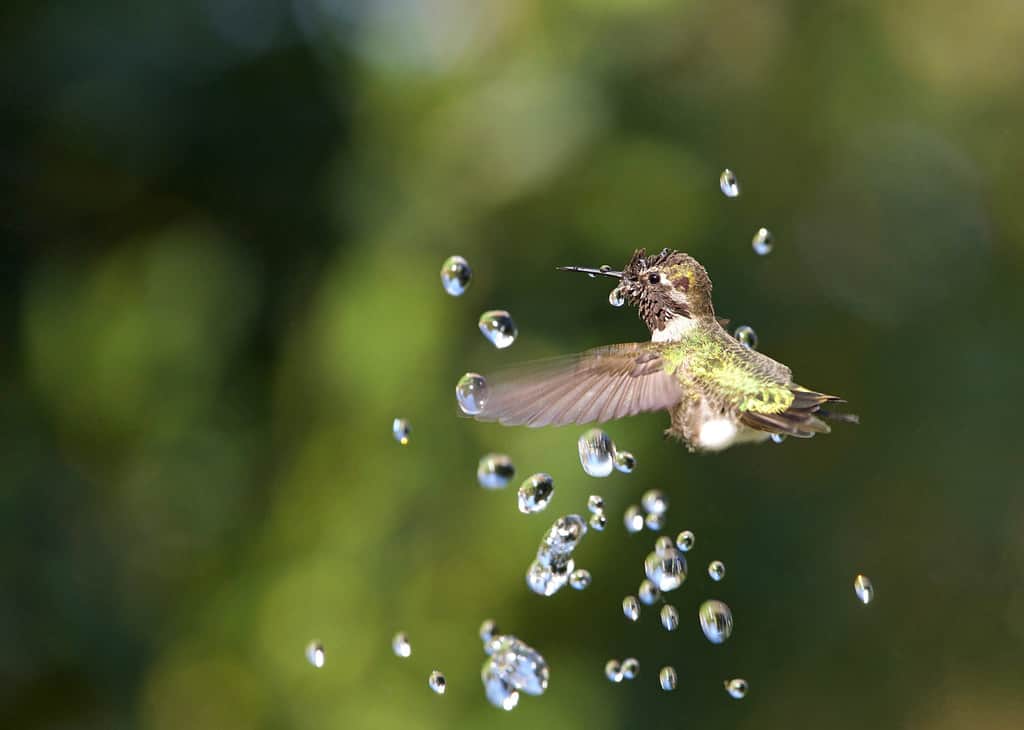
©Sheila Fitzgerald/Shutterstock.com
Yes, hummingbirds do enjoy bird baths. Hummingbirds are not only attracted to the vibrant colors of flowers and the sweet nectar they provide but also to bird baths. While many birds visit bird baths primarily to quench their thirst, hummingbirds have a unique relationship with water. Although they do not drink much plain water, as their hydration and nutrition mainly come from the nectar they consume, these tiny creatures still need access to clean water for other essential purposes.
Grooming is an integral part of a bird’s life, and hummingbirds are no exception. Contrary to what some may think, grooming is not about vanity for these exquisite creatures. It serves vital functions in maintaining their well-being. A birdbath offers a convenient space for hummingbirds to cleanse debris and residue from their delicate feathers. As they flutter around in the bathwater or gently dip themselves into its shimmering surface, they effectively rid themselves of dirt that might accumulate during their high-energy flights.
Moreover, bathing in a bird bath allows hummingbirds to spread the oil produced by their preen gland throughout their bodies. This natural oil acts as a protective coating on each individual feather strand, enhancing its durability and flexibility while simultaneously repelling excess moisture.
By evenly distributing oil through preening, hummingbirds can stay warm during colder periods and fly more efficiently.
Beyond hygiene considerations, offering a bird bath provides additional benefits for keeping their tiny bodies cool. Getting wet helps hummingbirds lower their body temperatures on hot summer days.
How To Pick The Right Bird Bath for Hummingbirds

©Sydneymills/Shutterstock.com
Brightly Colored
Hummingbirds are drawn to bright colors, especially red and orange since it often indicates there is nectar nearby. Therefore, using a brightly-colored bird bath will likely attract them and keep them around. However, it isn’t necessary to use a red bath – any bright color, including stone, metallic, or concrete, will work too. Just make sure to add some colorful flowers close by to draw the hummingbirds in.
Shallow Water
When designing a hummingbird oasis in your garden, it is important to pick a bird bath that is shallow. Hummingbirds are very small and can easily be overwhelmed by a regular bird bath. To make a regular bird bath more suitable for hummingbirds, add stones, gravel or rocks to the bottom to create a shallower area and a less slippery surface.
Misting Feature
When setting up a mister near a plant, position it close so that the birds can rub their bodies against the wet leaves. The sound of the mister will draw in hummingbirds, as well as the dewy, sparkling leaves. If the water flow is low enough, the birds may even use the mister for direct bathing. To make this easier, you can add misting sprinkler heads to your existing sprinkler system, but make sure the water flow is gentle enough for the hummingbirds to use.
Fountain Feature
Hummingbirds can particularly benefit from having a fountain in their birdbath. The shallow areas of a fountain, such as lips and ledges, provide the perfect spot for them to rest and splash around in the water. You will see them hover near the flowing water and dip their wings in to get wet.
Dripping Water
Hummingbirds are attracted to the gentle flow of water from drippers placed near rocks or foliage. This allows them to bathe either directly under the water source or by rubbing against a wet object. The sound of the dripper will lure the birds in, so if you’re looking to create a hummingbird oasis, definitely consider dripping water.
Add a Perch
When selecting a bird bath for hummingbirds, make sure there are places for them to perch. These places can be on trees, shrubs, and even on clotheslines. Birds use these perches for many things, like climbing, courting, and grooming. It is important to provide multiple perches to give the birds more options for resting.
Bird Bath For Hummingbirds—Where to Place Them
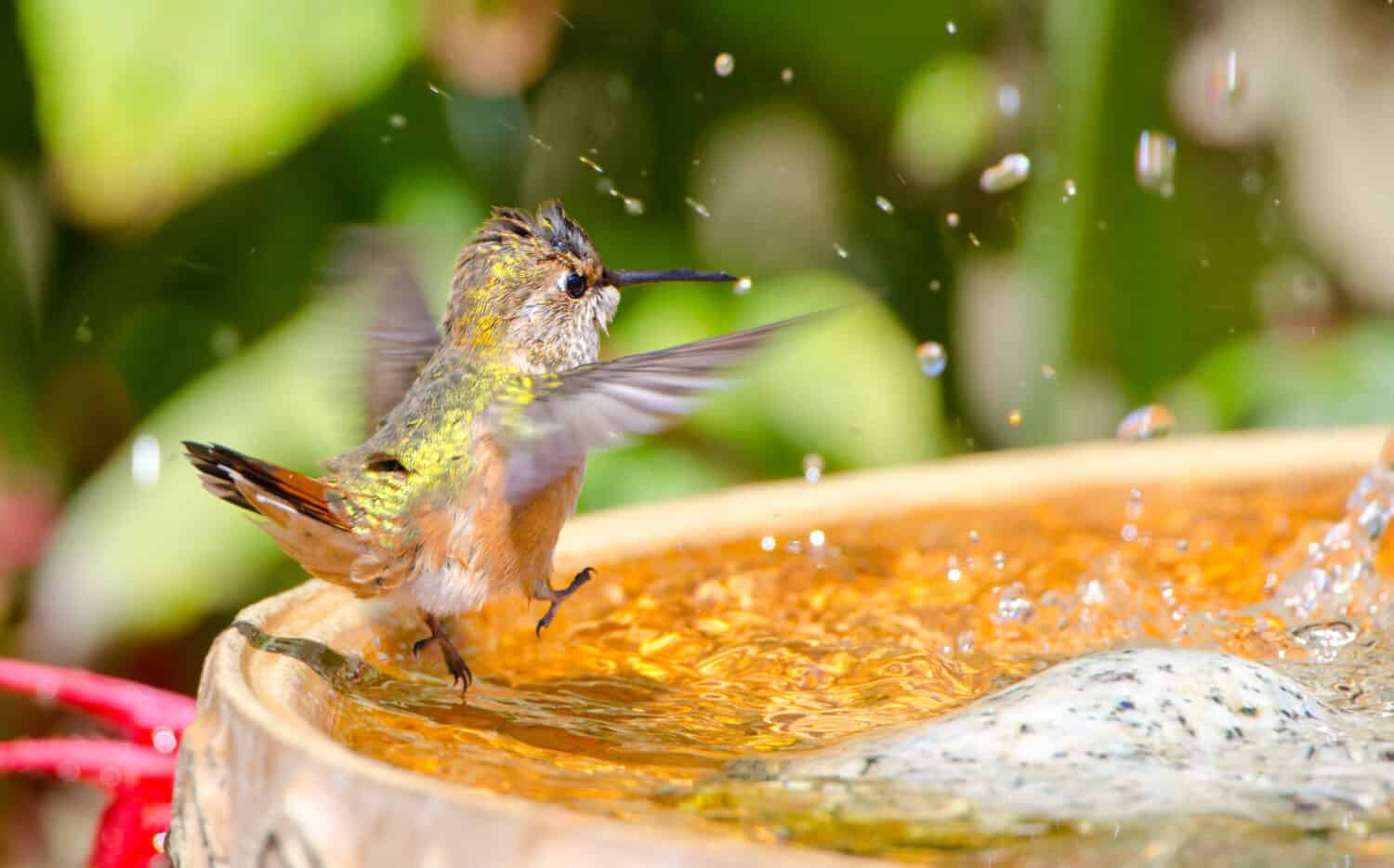
©Birdiegal/Shutterstock.com
Hummingbirds will be more likely to come to your birdbath if it is placed at the right height – no more than two feet off the ground. You can even place a basin directly on the ground for hummingbirds to use. The frogs will love it too!
Additionally, they need access to a shady place in order to cool down on hot summer days and also an area that does not receive too much sun so that the water does not evaporate quickly. If you want to install electric water features, such as fountains or drippers, make sure they are close enough to a power source. If not, look for solar-powered options.
Bird Bath For Hummingbirds—How to Clean Them
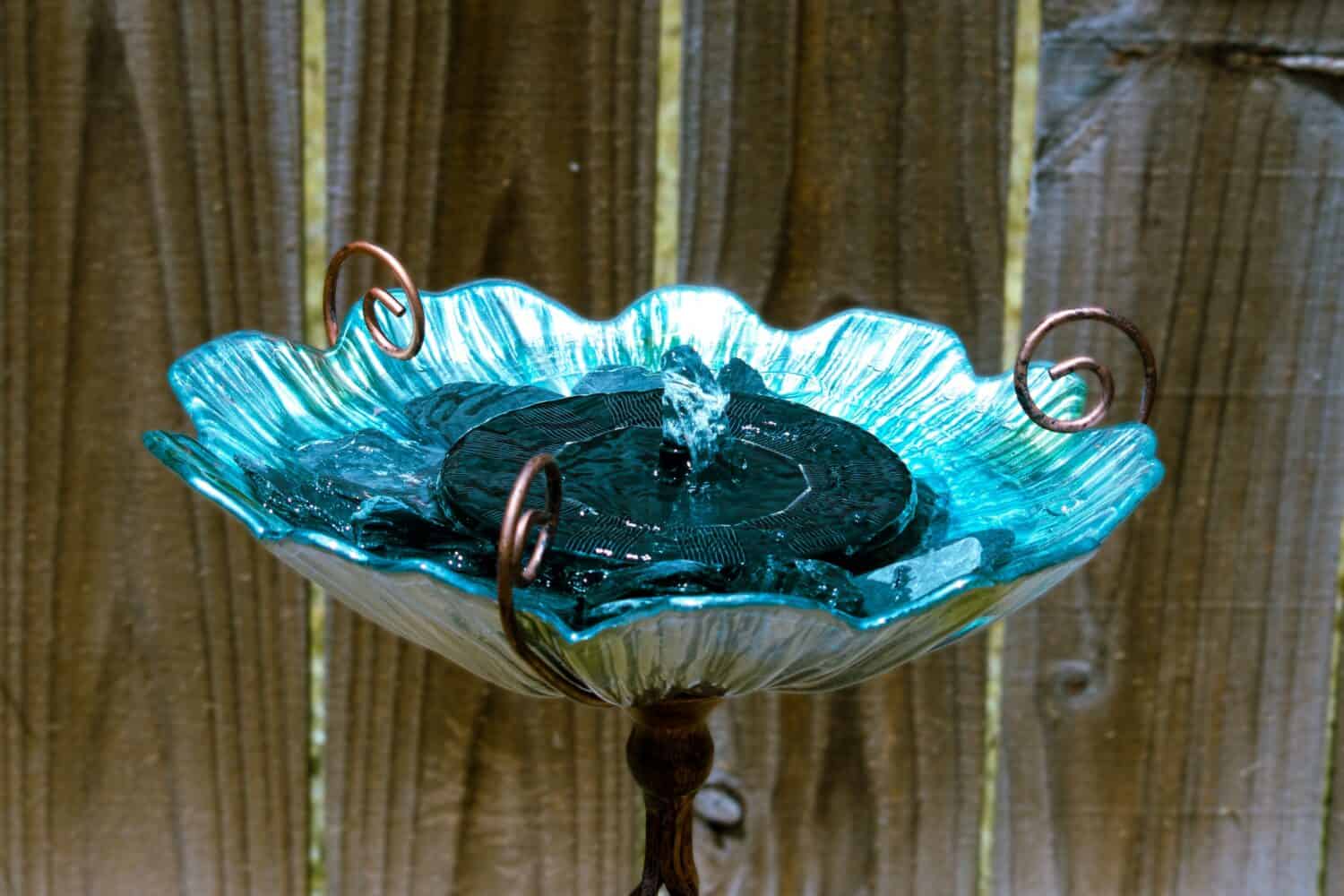
©Bobbie23/Shutterstock.com
In order to create a welcoming oasis for hummingbirds, it is crucial to maintain clean and sanitary bird baths. Regardless of the type of bird, following these best practices will help keep your birdbaths pristine.
Firstly, it is important to regularly empty basins, clean them thoroughly, and then refill them. Standing water can quickly become dirty due to various factors, such as leaves or debris falling into the bath. Therefore, replacing the water more frequently than anticipated is essential for ensuring its cleanliness.
Furthermore, make it a habit to routinely inspect all water feature accessories for any issues that may arise. Clogs or malfunctions in the system can not only prevent proper functioning but also deter birds from visiting your bird bath altogether. By identifying and addressing such problems promptly, you can ensure an optimal bathing experience for hummingbirds and other feathered visitors.
After rainstorms, be mindful to check that the water levels do not rise excessively in the bird bath. This overflow may repel hummingbirds or pose potential risks if they were to accidentally get trapped in rising waters.
When it comes to keeping a hummingbird bath clean, it is important to avoid any dangerous chemicals, such as bleach, which can be hazardous for these small birds. To clean the bird bath, mix nine parts water with one part vinegar and use it to rinse and scrub the surface. It is best to avoid detergents and soaps as they can take away the essential oils from the feathers. Lastly, make sure to change the water every other day to prevent it from becoming stagnant.
Keep the Hummingbirds Safe
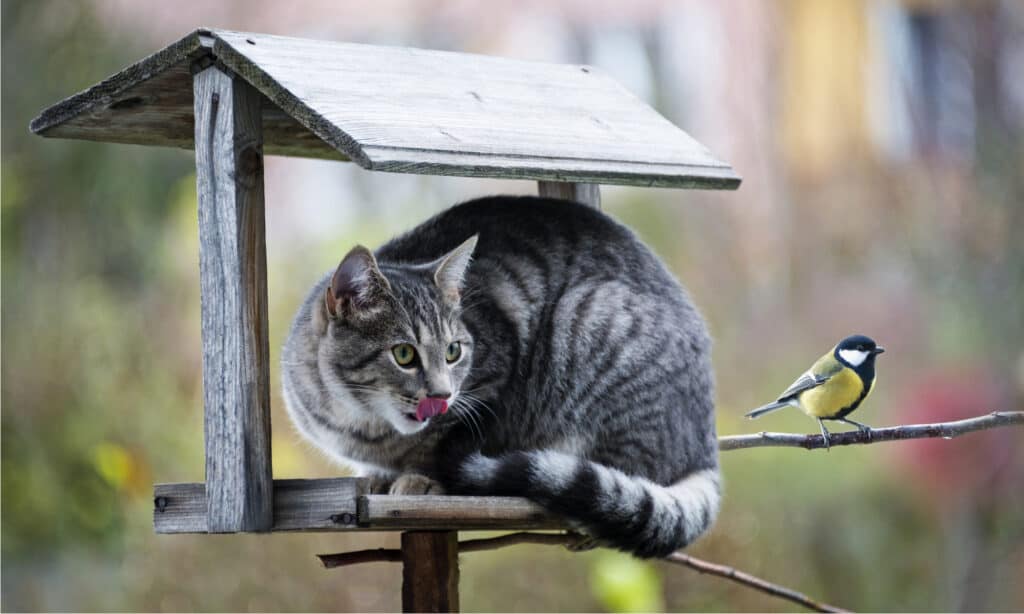
©Kuttelvaserova Stuchelova/Shutterstock.com
To keep hummingbirds safe from potential predators, it is important to choose a spot in your yard that does not get a lot of foot traffic. Plant some foliage nearby so hummingbirds can hide if they feel threatened by cats, snakes, or other animals. Additionally, it is important to check the area regularly for any signs of predators or threats.
If you have cats or other pets in your yard, it is important to keep them away from the bird bath. If the cats cannot be managed, consider setting up a special area for the hummingbirds with a netting or fence to keep cats out.
Hummingbirds are naturally wary, so try to minimize noise and activity around the bird bath. By limiting potential threats to hummingbirds, you can ensure their safety.
Finally, if you have a garden, consider adding some flowers that will attract hummingbirds. Not only will this provide them with a food source, but it will also give them an area to safely rest and feed. Additionally, the flowers will provide some protection from potential predators.
20 Tips to Create a Hummingbird Oasis
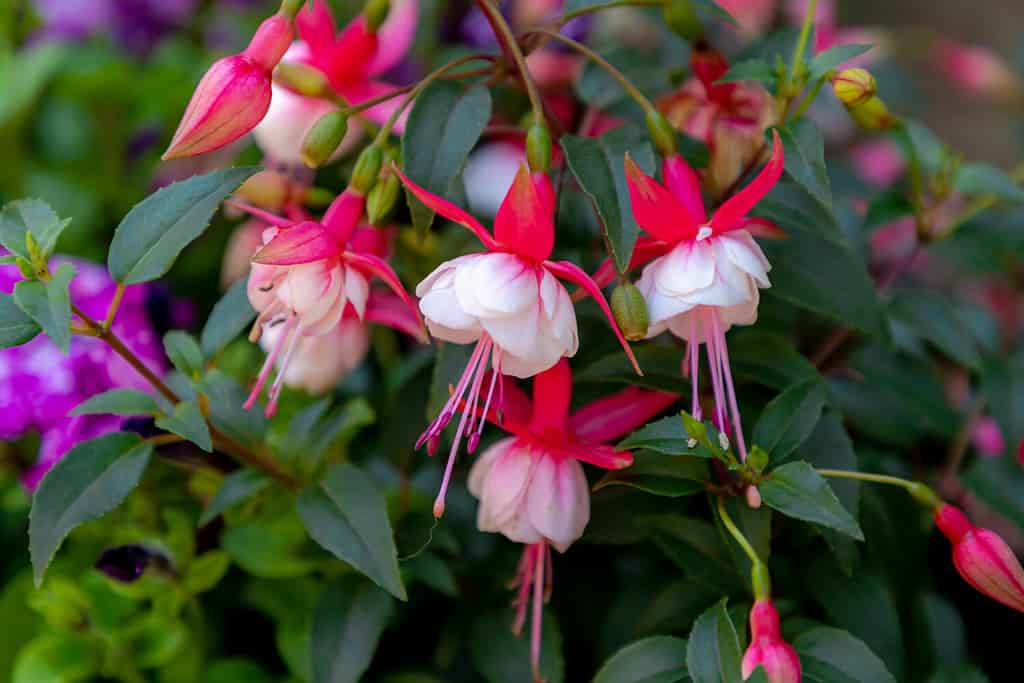
©Wut_Moppie/Shutterstock.com
- Install a hummingbird feeder with sugar water.
- Plant a variety of flowers, such as columbine, bee balm, petunias, and honeysuckle.
- Place the feeder and flowers near a window so you can watch the hummingbirds.
- Choose feeders with multiple feeding ports so more hummingbirds can feed at once.
- Put your feeder in a sunny spot, but make sure it’s in the shade during the hottest part of the day.
- Hang the feeder at least five feet off the ground.
- Choose plants with different bloom times so there is food available throughout the season.
- Plant native plants that will attract hummingbirds.
- Provide multiple water sources, such as birdbaths, misters, and drippers.
- Include plants that provide nectar, such as lantana, salvias, penstemon, and fuchsia.
- Install perches near the feeder and flowers so the hummingbirds can rest.
- Plant trees and shrubs for shelter and protection.
- Make sure the garden is free of pesticides and other chemicals.
- Plant a variety of grasses and other plants to provide cover and nesting materials.
- Place birdhouses in the garden to attract nesting hummingbirds. They are not cavity nesters but will sometimes use gourd-shaped houses made from woven grasses.
- Hang wind chimes in the garden to attract hummingbirds with their sound.
- Place birdbaths in a sunny spot so the hummingbirds can bathe and drink.
- Add a variety of flowers to the garden, such as lilies, impatiens, and daisies.
- Fence off an area especially for hummingbirds so predatory cats cannot get inside.
- Keep the bird bath or water source clean and germ-free.
Up Next:
"bird" - Google News
July 29, 2023 at 03:44AM
https://ift.tt/1i4XkJH
Do Hummingbirds Enjoy Bird Baths? 20 Tips for Creating a Hummingbird Oasis - AZ Animals
"bird" - Google News
https://ift.tt/mQgbt8a
https://ift.tt/1OtmHa7
Bagikan Berita Ini















0 Response to "Do Hummingbirds Enjoy Bird Baths? 20 Tips for Creating a Hummingbird Oasis - AZ Animals"
Post a Comment